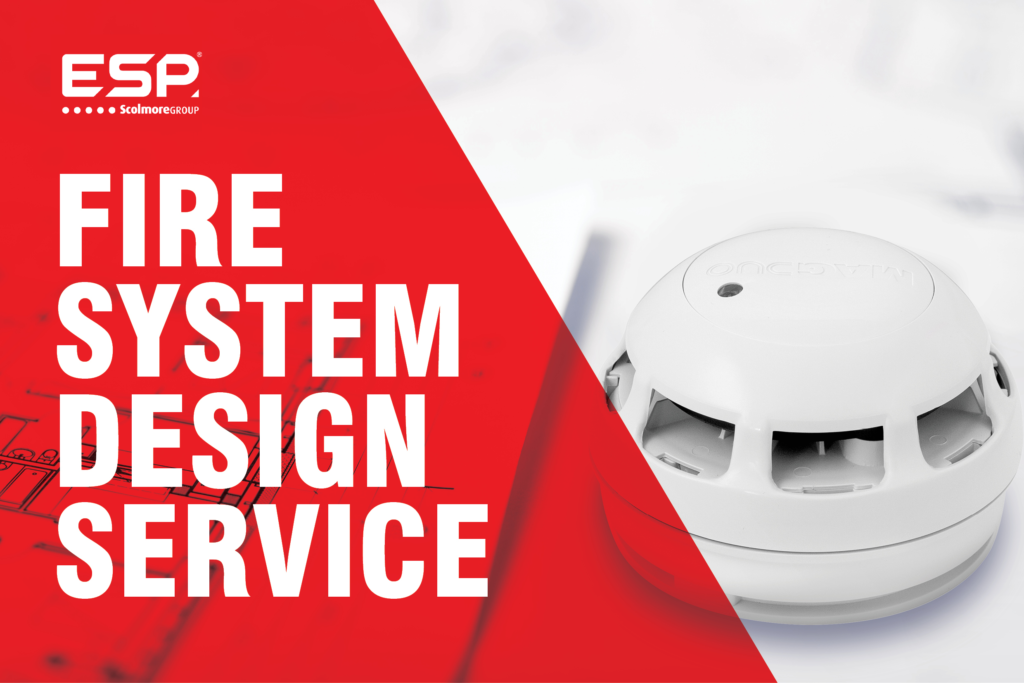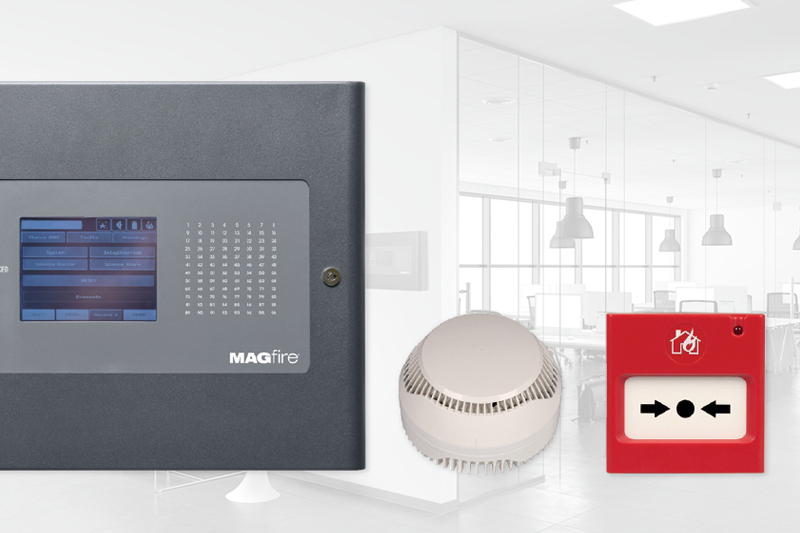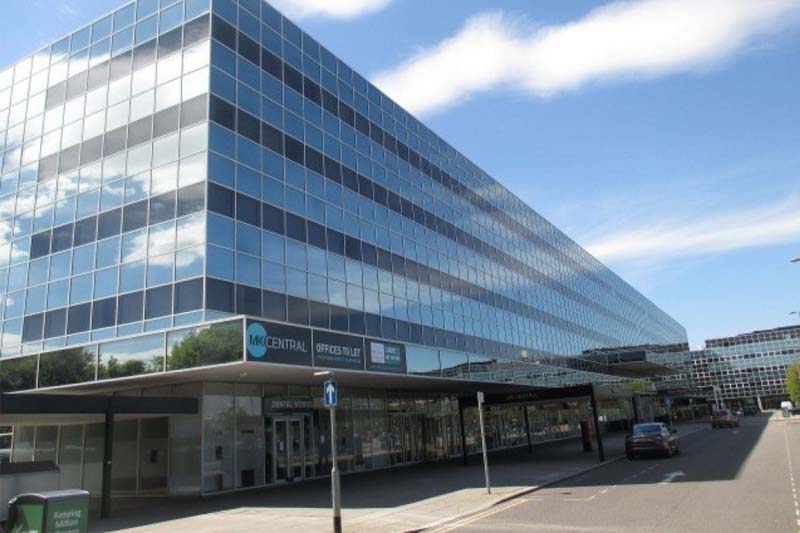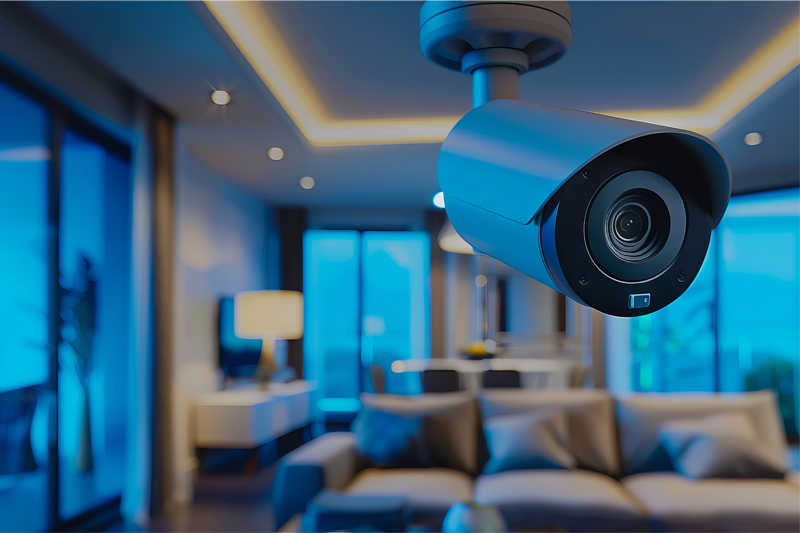Neil Baldwin of ESP looks at the different types of fire protection solutions available and highlights how ESP’s support for wholesalers and contractors goes way behind the supply of a comprehensive product range.
Fire alarm systems are broadly divided into two main groupings – ‘conventional’ fire alarm systems and analogue addressable ‘intelligent’ systems – with each type best suited to different kinds of premises.
Conventional systems
Conventional, or four-wire fire alarm systems have been traditionally used in smaller properties such as shops and restaurants. They work by dividing the building into a number of detection zones, with the detectors and call points within each zone hardwired on dedicated two-core cable to the control panel. There may be multiple detectors on a single zone.
A separate two-core, fire-protected cable for the alarm’s sounders is required as they are wired on different circuits. If a detector is activated, the control panel identifies the circuit that contains the triggered device and so indicates the zone from which the fire alarm has originated, but the area then has to be manually searched to pinpoint the individual device.
Because the majority of conventional detectors are simple, two state devices they can only be in either a normal or fire condition. Although modern components and quality system design can play a part in reducing potential problems, it is not uncommon for conventional systems to generate unwanted alarms.
As such, conventional systems are not suitable in large buildings which could potentially have over 50 zones in order to correctly protect the property to the prevailing industry standards. A conventional system would prove a costly and time consuming exercise.
Intelligent systems
Addressable or ‘intelligent’ fire alarm systems overcome these limitations and are designed for large commercial premises and more complex networked systems. They are more expensive and more complicated than conventional four-wire systems, having increased flexibility, intelligence, speed of identification and scope of control.
In addressable systems, different types of initiating devices are wired in one or more single loops around the premises, requiring less cabling than conventional systems, with each detector or call point having its own unique address. The fire control panel receives information and status reports from each device and indicates its exact location if there is a fault, contamination or activation via smoke or heat detection. As these control panels have become more sophisticated and more powerful, they are capable of handling an increasing number of loops per panel and it is possible to network numerous panels together to increase the capacity.
Two-wire technology
Two-wire fire alarm systems are based on standard conventional system technology. However, unlike standard conventional four-wired systems where the detectors, call points and alarm devices for each zone are wired on separate circuits, the new intelligent two-wire technology allows all devices to be wired on the same set of two-core zone cables back to the control panel – enabling it to use a single circuit per zone both for detection and to power the sounders. This advanced technology can reduce both installation and material cost.
A range of solutions
ESP’s extensive fire protection product range is broadly divided into two categories. The MAGDUO two-wire fire alarm system is aimed at small to medium contractors, offering them a highly flexible and adaptable system that will save them time and money on the installation process. The MAGfire range covers conventional, or four-wire, fire alarm systems which have been traditionally used in smaller properties such as shops and restaurants, as well as addressable systems which are suitable for large commercial premises and more complex networked systems.

Free Design Service
A dedicated ESP design service allows contractors to access a free of charge design facility that will cover fire systems as well as CCTV systems.
Available to any size of business, from local electricians to national contracting companies, the aim is to provide expertise in choosing the right products and solutions to create a scheme that meets all the requirements and objectives of the project in question, and that is compliant with all the relevant regulations and standards.
From an initial enquiry to discuss the requirements, the next stage will be one of information and measurements gathering. For larger and more complex design schemes, a visit to site will be carried out for a detailed survey. With all the relevant information gathered, including drawings and specifications, a suitable design proposal for a fire system will be created and supplied to the client along with a quotation. Two-way interaction between customer and the ESP design team throughout the process will be of paramount importance to ensure the design scheme meets all the necessary requirements.
Fire Commissioning Service
The commissioning service offered by ESP adds another dimension to the company’s fire protection offer. It is designed to ensure that all installed ESP systems operate correctly and are fully compliant with the latest BS5839-1 regulations. A qualified engineer will confirm that the system has reached the relevant British Standard and will issue a certificate on completion of the project prior to system handover. Dedicated ESP commissioning engineers are located throughout the UK to provide access to this new service to a wide-reaching audience.
BAFE Accreditation for ESP
At the end of 2021, ESP added another string to its credentials bow, with the announcement that the company had been awarded BAFE (British Approvals for Fire Equipment) accreditation for its fire design service. BAFE is the independent registration body for Third Party Certified fire safety service providers across the UK, and ESP now appears on the National BAFE Fire Safety Register.
BAFE manages and maintains a Scheme called BAFE SP203-1, which covers Fire Detection and Alarm Systems. This Scheme exists to deliver quality, independent evidence that providers – like ESP – are competent to deliver fire system designs for its fire detection and alarm systems.
ESP is only permitted to become BAFE Registered and appear on the national BAFE Fire Safety Register once the company holds the appropriate/valid Third-Party Certification. ESP continues to meet the criteria of the relevant BAFE Scheme. This establishes robust evidence of competency requirements that demonstrates the provider’s commitment to quality. It also provides assurances to ESP’s customers that the company will deliver a fire system design that complies with all the relevant British Standards.
Complete package
With these latest developments, contractors can now take advantage of a full fire systems package from ESP, which gives them access to a free design service, a vast choice of products including the latest two-wire systems, the new commissioning service, plus technical support from a team of qualified and experienced operators.

For further information, contact ESP on 01527 515150, email info@espuk.com or visit the website here




